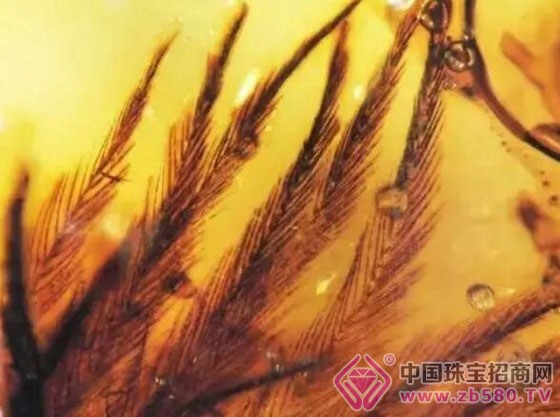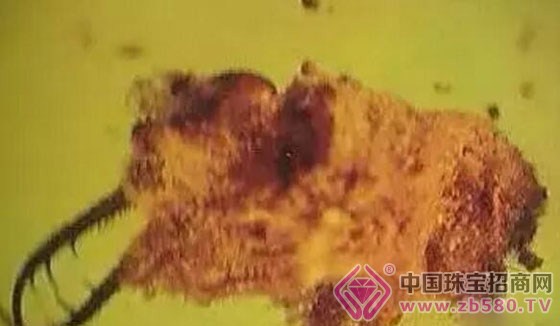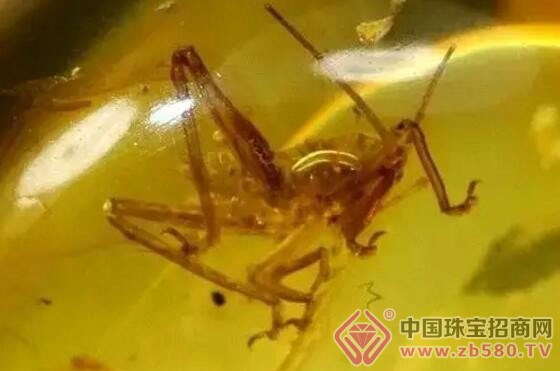Amber, as an organic gemstone with great value for viewing and collection, is now well known. However, the preciousness of amber from other gems is also reflected in its commercial value. Scientists through the study of amber inclusions, the research results can even refresh human perception of the Earth. Today, I am a small editor of the shocking scientific discovery of the amber in the popular science.

Prehistoric spider blood
Scientists have discovered a unique amber 20 million years ago in the Dominican Republic. It has a high scientific value, and the amber contains the earliest blood drops of ancient animals found so far. Paleontologist David Penney said that in the future, spider blood samples can be extracted from the amber to help scientists analyze the origin of spiders in the Caribbean.

Ancient feather
In 2011, Ryan Mckellar, a paleontologist at the University of Alberta in Canada, discovered 11 amber samples containing feathers. There is a feather structure called "dinosaur fluff", in which a feather sample contains rules. The hollow fiber of the pitch is about 16 microns in diameter. It is probably an ancient bird or a feather on the body of a dinosaur.

Early insect camouflage
In 2012, researchers at the University of Barcelona reported that a sample of insect fossils was found 110 million years ago in Spain, which is the earliest evidence of insect camouflage. It is a creature called Hallucinochrysadiogenesi, an ancient close relative of modern grasshoppers. Like modern grasshoppers, it wraps plant filaments around its body, forming a projection that tries to hide in the sight of predators.
Gnome locust
One of the most important amber samples in the Dominican Republic is the newly discovered ancient species, the pygmy aphid, whose scientific name is Electrotettixattenboroughi, discovered by British naturalist David Ardenborg. This pygmy aphid sample is similar in size to the rose bud, living between 18 and 20 million years ago in the Tertiary Miocene. This amber has important value, confirming the transitional type of locust evolution.

Ancient Lyme virus
This year, scientists found the oldest Lyme virus evidence in an amber. Because amber can preserve soft tissue intact, scientists collect a large number of microscopic samples, including bacteria stored in larger organisms. Researchers at Oregon State University analyzed amber samples from the Dominican Republic and found that ancient ticks infected with Lyme bacteria, dating back 15 to 20 million years.
Ancient arthropod
In 2012, scientists announced the discovery of an amber in northeastern Italy, which preserves two types of aphids. The history of arthropods in this millimeter-scale amber can be traced back to 230 million years ago, the earliest arthropods found before. The sample was 100 million years old. At present, the two ancient locust species are identified as Triasacarusfedelei and Ampezzoatriassica, which are ancient close relatives of modern cockroaches.
Evidence of sexual reproduction of flowering plants 110 million years ago
In 2014, Burmese scientists studied a well-preserved early Cretaceous amber sample, and found 18 small flowers in amber, one of which is making new seeds, dating back 110 million years. The diversity of flowering plants in the dinosaur era was verified.
Early spider web
In 2006, an amber was found in Spain containing a spider web 110 million years ago. In 2003, an older spider web amber was discovered in Lebanon, dating back to 132 million years. The oldest found in humans is the amber of the spider web, which is about 140 million years old.
Spider attacking wasp
During the Cretaceous period more than 100 million years ago, a round spider was preparing to pounce on a male wasp trapped on a spider web. Suddenly a drop of resin fell from a height and hit the spider. This amber perfectly preserves this scene. It was not until 2012 that archaeologists discovered this amber in Hukang Valley, Myanmar. It was identified that this female round spider is an extinct round spider.
Parasite on the ant's head
In a part of the Baltic Sea between 44 million and 49 million years ago, an ant with parasites on its head was trapped in a pond by a resin to form a perfect amber. This parasite is a species of the genus Aphid, which lives in the head of an ant. It is likely that the ants will spawn on the ant's head and behave like some of the current locust species, which clearly see the anatomy of the ants and parasites.
Slub Jersey,Slub Jersey Knitted Fabric,Slub Cotton Knit Single Jersey Fabric,Slub Single Jersey Fabric
Shaoxing Huangdaopo Trade Co.,Ltd. , https://www.sxhdptrading.com